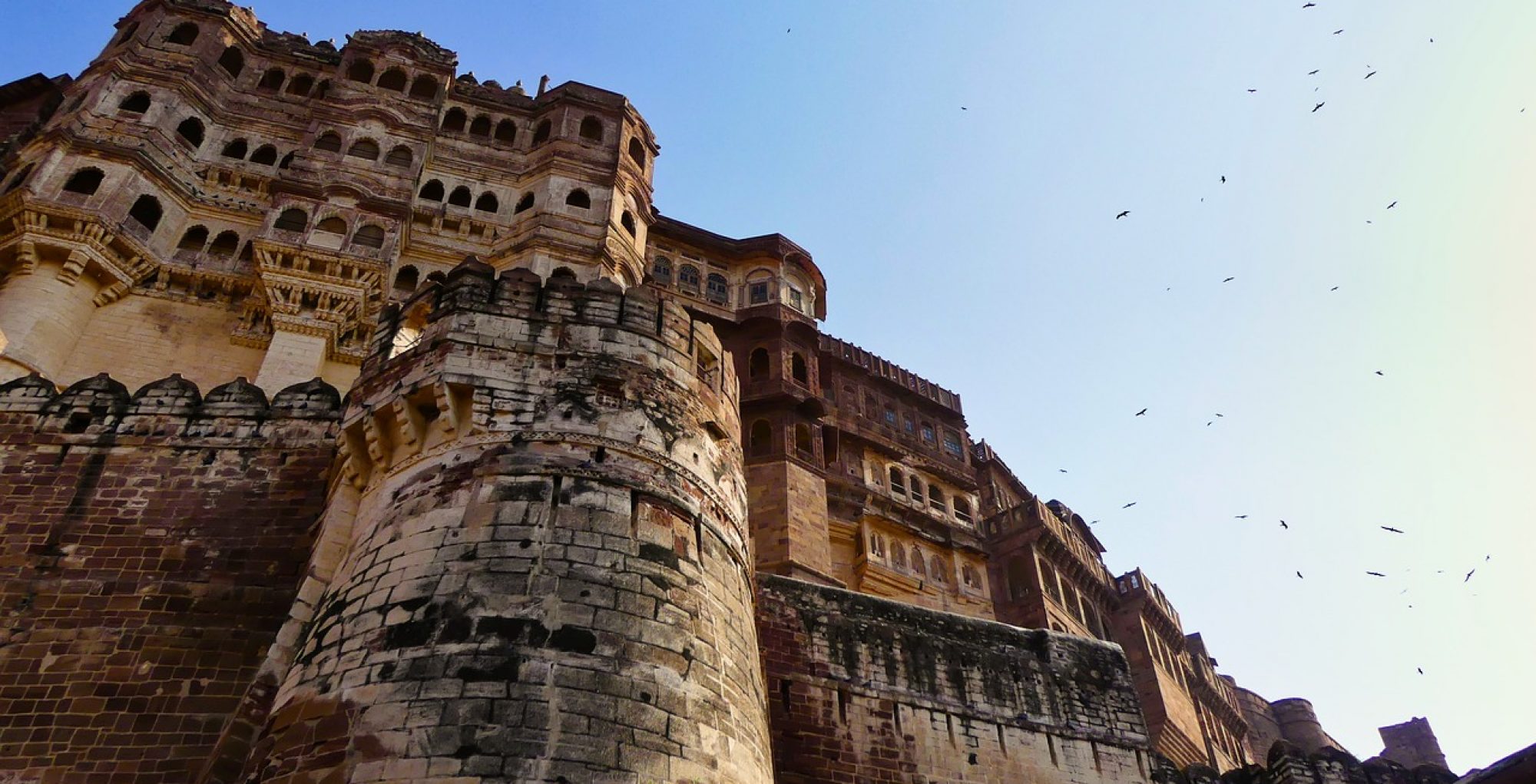Itinerary
NAMASTE
All flights, train timings and sightseeing tours are subject to change. The itinerary intended to give you a general idea of the likely trip schedule. Numerous factors such as weather, road conditions, the physical ability of the participants etc. may dictate itinerary changes either before the tour or while on the trail. We reserve the right to change any schedule in the interest of the trip participants’ safety, comfort & general well being.
Day 1 – Delhi
A representative will be at the airport to receive and escort you to a Private vehicle which will take you to Hotel The Leela Palace.
DELHI: New Delhi, the capital and the third largest city of India is a fusion of the ancient and the modern. Delhi unwinds a picture rich with culture, architecture and human diversity, deep in history, monuments, museums, galleries, gardens and exotic shows. Comprising of two contrasting yet harmonious parts, the Old Delhi and New Delhi, the city is a travel hub of Northern India. Narrating the city’s Mughal past, Old Delhi, takes you through the labyrinthine streets passing through formidable mosques, monuments and forts. The imperial city of New Delhi displays the finely carved architecture of British Raj.
Day free to relax in the hotel. Car and driver at disposal. Overnight in the hotel.
Day 2 – Delhi
After breakfast, proceed for sightseeing of Old Delhi with a French speaking guide:
Old Delhi: Old Delhi was once known as Shahjahanabad. Mughal Emperor Shah Jahan established and made it his capital. This fortified city has a long and interesting history and even today, the remains of its glorious past can be seen in the form of Kashmiri Gate, Ajmeri Gate, Turkman Gate, Delhi Gate and Feroz Shah Kotla.
RAJGHAT: The Raj Ghat is the last resting place of the Father of the Nation, Mahatma Gandhi. The place is not far away from the banks of River Yamuna. Mahatma Gandhi was cremated here on 31st January 1948 following his assassination on 30th January 1948 by Nathuram Godse. The memorial stone is a simple square platform made of black stone. An eternal flame keeps burning in a copper urn in the Raj Ghat.
RED FORT (Drive Past): Shah Jahan shifted his capital from Agra to Shahjahanabad and laid the foundation of Red Fort, or the Lal Quila, on 16th April 1639. It took nine years to build this mighty citadel and it got completed on 16th April 1648. Built of red sandstone, it is octagonal in shape, with two longer sides on the east and west.
JAMA MASJID: Built by Shah Jahan in 1658, it is one of the largest mosques in India with a seating capacity of more than 20,000. The Mosque is situated near the Red Fort in old Delhi. This is the area that still retains the traditional charm of markets in Mughal times. The bulbous domes and tapering minarets built with marble stand strong and beautiful even to this day. This mosque has three gateways, four angle towers and two 40 m. high minarets.
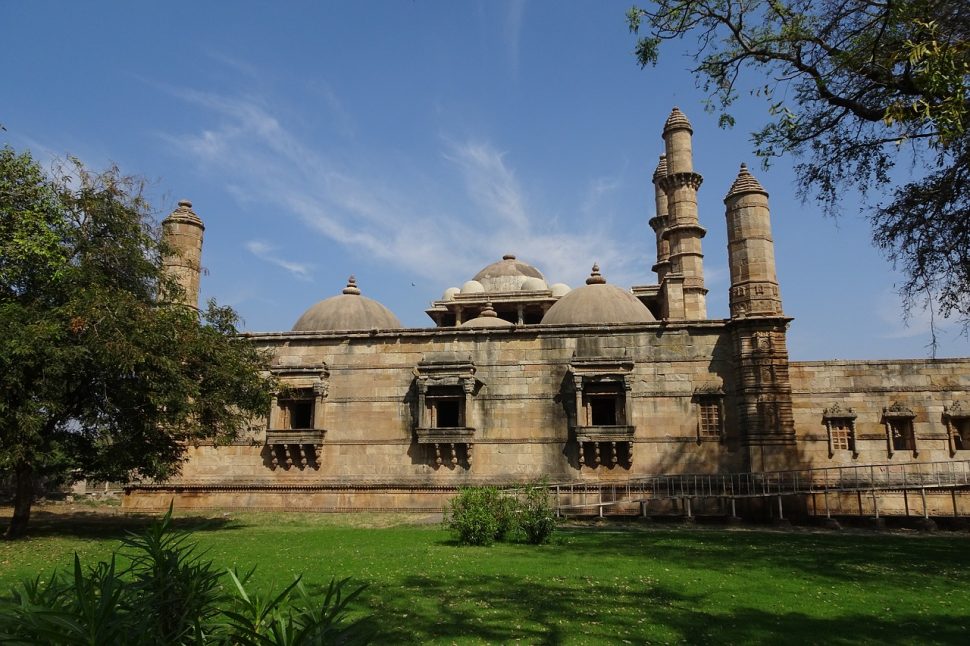
CHANDINI CHOWK: One of the main markets of Delhi, Chandni Chowk was once lined with beautiful fountains. But today the place is very crowded and congested. Chandni Chowk is located opposite the Red Fort. The area has got the Digamber Jain Temple which houses the Birds’ Hospital. On one end of Chandni Chowk is the Fatehpuri Mosque which was erected by the wives of Shah Jahan. Opposite the old police station or the Kotwali is the Sunheri Masjid from where Nadir Shah ordered his troops to plunder and massacre Delhi.
Cycle-rickshaw ride will be provided in the bazaar. Overnight in the hotel.
Day 3 – Delhi
After breakfast, proceed for sightseeing of New Delhi with a French speaking guide:
Spacious New Delhi was built as the imperial capital of India by the British with its wide avenues and regal buildings. New Delhi is where the high fashion socialites meet over frothy cappuccinos or frosty cocktails at swanky cafés and bars.
HUMAYUN’S TOMB: Built by the wife of Humayun, Haji Begum, in the mid 16th century, this red sandstone structure is considered to be the predecessor of Taj Mahal. The structure is one of the best examples of Mughal Architecture. Humayun’s wife is also buried in the red and white sandstone, black and yellow marble tomb.
INDIA GATE: It is a 42m high stone Arch of Triumph. It bears the name of the 85,000 Indian Army Soldiers who died in the campaigns of World War I, the North-West Frontiers operations and the 1919 Afghan Fiasco. Below the arch is the “Memorial to the Unknown Soldier”.
RASTRAPATI BHAWAN (Drive Past): It is the official home of the President of India. It may refer to only the mansion which has 340 rooms in the main building, located within 320 acres of huge presidential gardens (Mughal Gardens). It also has large open spaces, residences of bodyguards and staff, stables, other offices and utilities within its perimeter walls.
THE NATIONAL GANDHI MUSEUM: It is a museum located in New Delhi, showcasing the life and principles of Mahatma Gandhi. The museum first opened in Mumbai, shortly after Gandhi was assassinated in 1948. The museum relocated several times before moving to Rajghat, New Delhi in 1961.
QUTAB MINAR: It is undoubtedly one of the finest stone towers in India and one of the most important landmarks of Delhi. Iltutmish, the son-in-law and successor of Qutubuddin, completed its construction. Built in red sandstone, this tower sports the inscriptions of verses of Holy Quran and some intricate carvings. Situated in the courtyard of the Quwwatu’l-Islam, the famous Ashoka Iron Pillar, belonging to the 4th century, has a Sanskrit inscription in Gupta script confirming the date.
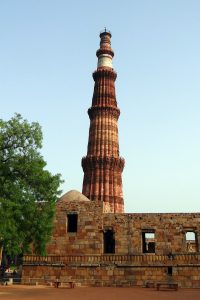
Overnight in the hotel.
Day 4 – Delhi – Agra (210 kms / 3.5hrs (approx))
After breakfast, depart for the Mughal City – Agra, arrive and check-in at Hotel The Oberoi Amarvilas.
AGRA: The Mughal love of architecture translated into beautiful monuments such as Taj Mahal, Agra Fort, Fatehpur Sikri and Sikandra. The glory of Agra was at its peak during the reign of Emperors Akbar, Jehangir and Shah Jahan. Akbar made it the center of art, culture, commerce and learning and Shah Jahan saw it in full bloom. Mughlai cuisine and the skilled craftsmen can still be seen in the narrow lanes of the city as a reminiscent of the lost times.
In the evening, enjoy “Sound & Light” show at Agra Fort (Subject to operation). Overnight in the hotel.
Day 5 – Agra
Early in the morning, visit the Monument of Love – Taj Mahal by sunrise with a French speaking guide:
TAJ MAHAL: Sheer poetry in marble! Majesty and magnificence unrivalled! The Taj Mahal – the one and only one of its kind across the world – is a monumental labor of love of a great ruler for his beloved queen. The ultimate realization of Emperor Shah Jahan’s dream and one of the Seven Wonders of the World! From 1631 A.D., it took 22 years and 20,000 workers in the making – an enchanting mausoleum on the banks of the River Yamuna. Return to the hotel for breakfast.
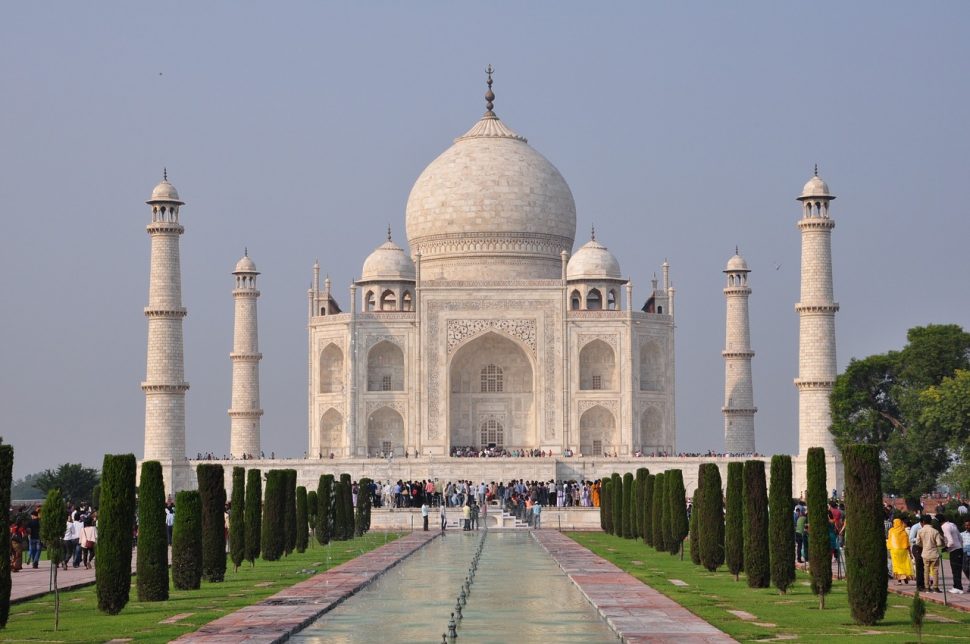
In the afternoon, proceed to visit the Agra Fort:
THE AGRA FORT: The great Mughal Emperor Akbar commissioned the construction of the Agra Fort in 1565, A.D. although additions were made till the time of his grandson Shah Jahan. The forbidding exteriors of this fort hide an inner paradise. There are a number of exquisite buildings like Moti Masjid – a white marble mosque akin to a perfect pearl; Diwan-I-Am, Diwan-I-Khaas, Musamman Burj – where Shah Jahan died in 1666 A.D.- Jahangir’s Palace, Khaas Mahal and Shish Mahal. Return to the hotel for an overnight stay.
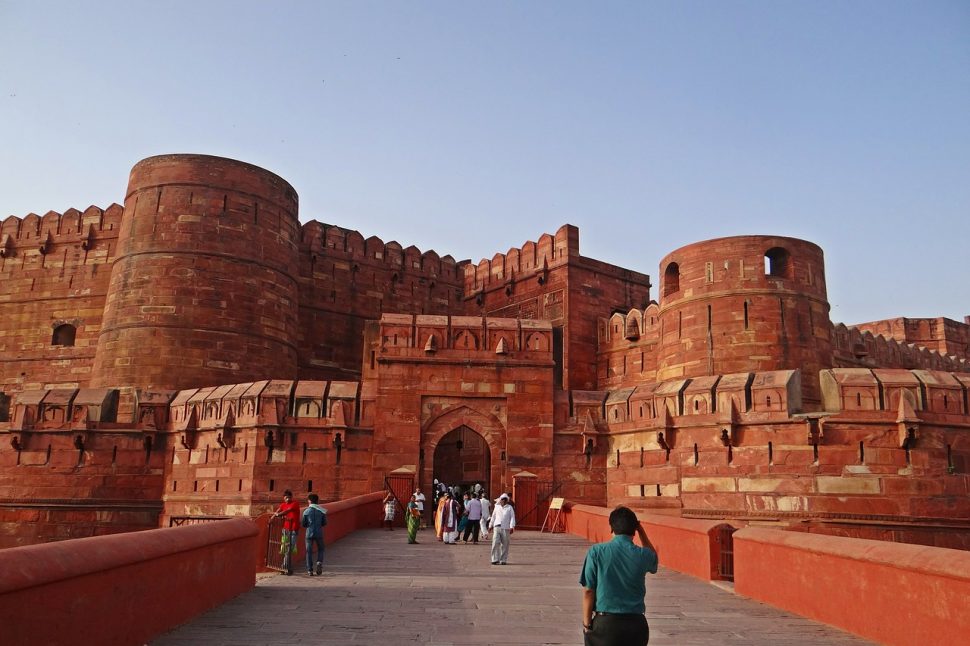
Day 6 – Agra – Jaipur (235 Kms. / 4.5 Hrs. (approx.)
After breakfast, depart for the Pink City – Jaipur, stopping enroute to see the deserted city of Fatehpur Sikri:
FATEHPUR SIKRI: The imperial city of the Mughal dynasty between 1571 and 1584, Fatehpur Sikri was built by Mughal Emperor Akbar and served as his capital till it was abandoned. The architectural grandeur of this deserted city cannot be described in words and one can only experience the aura of its magnificent edifices by seeing them. Fatehpur Sikri is a popular day excursion from Agra for many.
Stop for lunch at the heritage hotel – Laxmi Vilas Palace in Bharatpur. Proceed onto Jaipur, arrive and check-in at Hotel The Oberoi Rajvilas.
JAIPUR: Jaipur is a reservoir of the architectural wonders embracing the rich legacy of India. The remnants of the bygone era boast of the royalty of Jaipur including many palaces and monuments that are worth seeing. Amber Fort, Jaigarh Fort and Nahargarh Fort are the three antique forts that provide the spectacular view of the city. In the heart of Jaipur, there lies the stunning City Palace.
In the evening, visit the local Spice and Vegetable Market – “Johri Bazaar”. Overnight in the hotel
Day 7 – Jaipur
After breakfast, depart for an excursion to Amber Fort with a French speaking guide:
THE AMBER FORT: The Amber Fort is located 11 km north to Jaipur. This fort had been the capital of Kachchwaha Rajputs. Later, Sawai Jai Singh changed the capital to Jaipur. The Amber Fort is one of the popular sights of attraction in Jaipur, where the tourists can enjoy elephant rides from the bottom of the Amber Fort to the hilltop. By standing on the hill top, the tourist can see the excellent views of Maota Lake. Elephant ride up to the Fort will be provided.
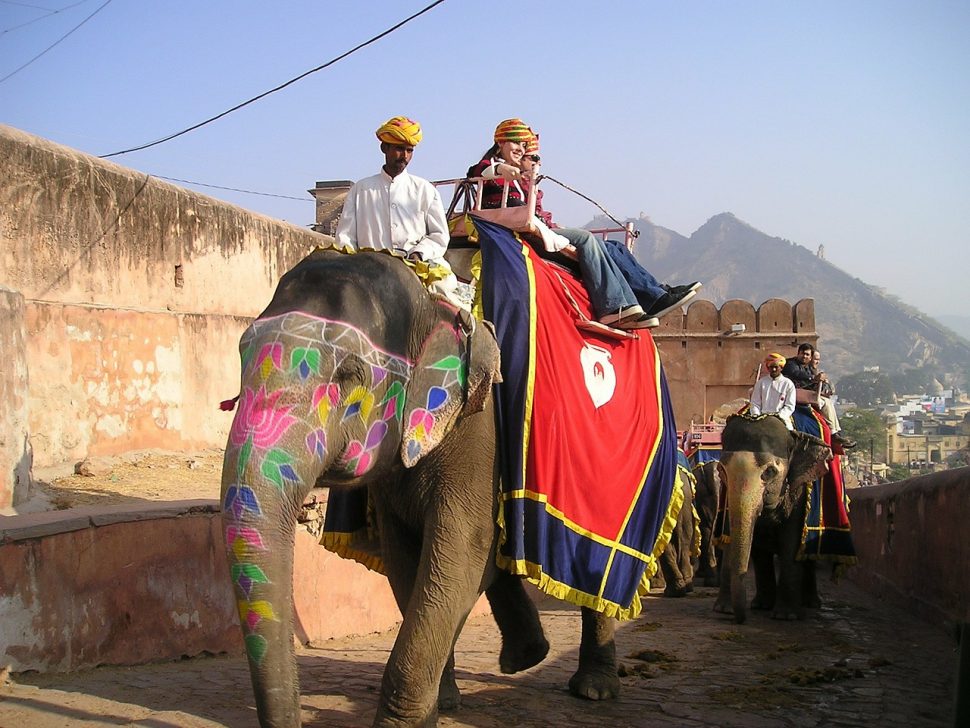
In the afternoon do sightseeing of Jaipur city:
HAWA MAHAL: Built in 1799, by Maharaja Sawai Pratap Singh, is the most “recognizable” monument of Jaipur. The 5 storied stunning semi-octagonal monument, having 152 windows with over hanging latticed balconies, is a fine piece of Rajput architecture. Originally designed for the royal ladies to watch and enjoy the processions and other activities, on the street below.
THE CITY PALACE:A major part of the City Palace has been converted into a Museum. Remaining part of the palace is still being used by the royal family of Jaipur as residence. The Palace is built in the fortified campus style and covers almost a seventh of Jaipur! There are different sections of the Museum dedicated to subjects like arms & ammunition, textile, costumes and an art gallery. Some important palaces in the complex include the Chandra Mahal, Mubarak Mahal, Diwan-I-Aam, and Diwan-I-Khas.
JANTAR MANTAR OR THE ASTRONOMICAL OBSERVATORY: Translated into “Instruments of Measuring the Harmony of the Heavens”, Jantar Mantar was built by Sawai Jai Singh between 1728 and 1734. Jantar Mantar is a grand celebration of astronomical science and each instrument here serves a particular function and gives an accurate reading. Major Yantras or instruments that one can watch moving clockwise are: Small Samrat’, ‘Dhruva’,’Narivalya’, The Observer’s Seat, Small ‘Kranti’ etc. Overnight in the hotel.
Day 8 – Jaipur – Jodhpur ( 340 Kms. / 6 Hrs. (approx.))
After an early breakfast, depart for the Blue City – Jodhpur. Packed lunch will be provided from the hotel. Arrive and check-in at Hotel Umaid Bhawan Palace.
JODHPUR: Jodhpur “The Sun City” was founded by Rao Jodha, a chief of the Rathore clan in 1459, and is named after him. Jodhpur is the second largest city in Rajasthan. It is divided into two parts – the old and the new city. The old city is separated by a 10 km long wall surrounding it with eight gates leading out of it. The new city is outside the walled city. The landscape is scenic and mesmerizing. Jodhpur city has many beautiful palaces and forts. It is also referred to as the “Blue City” due to the vivid blue-painted houses around the Mehrangarh Fort.
Overnight in the hotel.
Day 9 – Jodhpur
After breakfast, proceed to visit the magnificent Mehrangarh Fort (Audio Headset):
MEHRANGARH FORT: Mehrangarh is one of the largest and most Magnificent Fort in Rajasthan. It is situated on a 150 m high hill and was founded by Rao Jodha in 1459. Inside the fort, there are several palaces with sprawling huge courtyards. One of the fort’s palaces – the Moti Mahal (Pearl Palace), has the royal throne of Jodhpur, the Sringar Chowki. The fort also has galleries, temples, etc. The Mehrangarh Fort, with its beauty, is the living proof of the hard work and skill of the Jodhpuri sculptors.
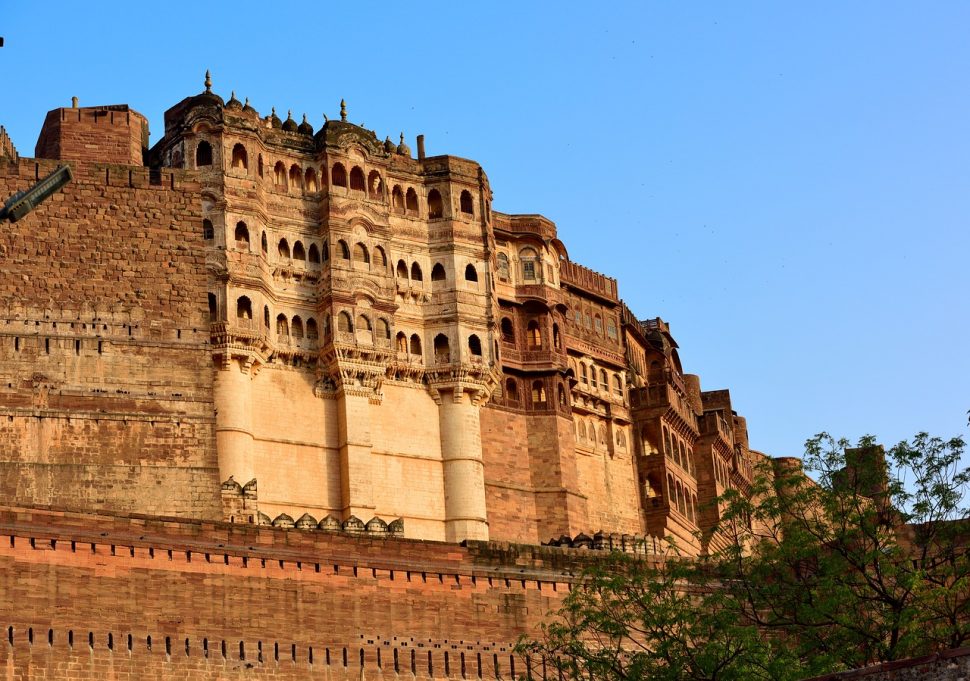
Return to the hotel and relax.
Day 10 – Jodhpur – Udaipur (260 Kms. / 5 Hrs. (approx.))
After breakfast, depart for the City of Lakes – Udaipur, stopping enroute to see the beautiful Jain Marble Temple at Ranakpur.
RANAKPUR: Renowned for some marvelously carved Jain temples in amber stones, Ranakpur is one of the five holy places of the Jain community. Open on all four sides, it enshrines the four faced image of Lord Adinath. Sprawling over 48,000 sq.feet, the temple is an astounding creation with 29 halls and 1,444 pillars – all distinctly carved. Images of 24 “Tirthankaras” are carved on the ‘Mandaps’ or porticoes in a corridor around the shrine – with each Mandap having a ‘Shikhar’ or spire adorned with little bells on the top.
Stop for lunch at Bijay Niwas Palace (on their own). Proceed onto Udaipur, arrive and check-in at Hotel The Oberoi Udaivilas.
UDAIPUR: Located around the shimmering clear blue water lakes, Udaipur is also known as the Lake City of India. Carrying a distinct identity of being a “romantic city”, Udaipur is an inspiration for the imagination of the poets, painters and writers. The exquisitely carved marble palaces, impressively laid out gardens and beautiful blue lakes make the terrain of hills & ravines of Aravallis give Udaipur a totally unique charm that distinguish it from any other destination in India.
Overnight in the hotel.
Day 11 – Udaipur
After breakfast, proceed for sightseeing of Udaipur City with a French speaking guide:
THE CITY PALACE: Built by Maharaja Udai Singh, the gorgeous City Palace is a marvel in marble, situated on the banks of Lake Pichola. Majestically set on a hill, it is flooded with balconies, towers and cupolas, along with superb views of Lake Pichola and the city. Surrounded by fortification walls, it has a triple arched gate at the entrance called Tripolia, which was built in 1725. A perfect amalgamation of Medieval European and Chinese architecture, the palatial complex has a number of astonishing buildings, well-planned gardens and fountains.
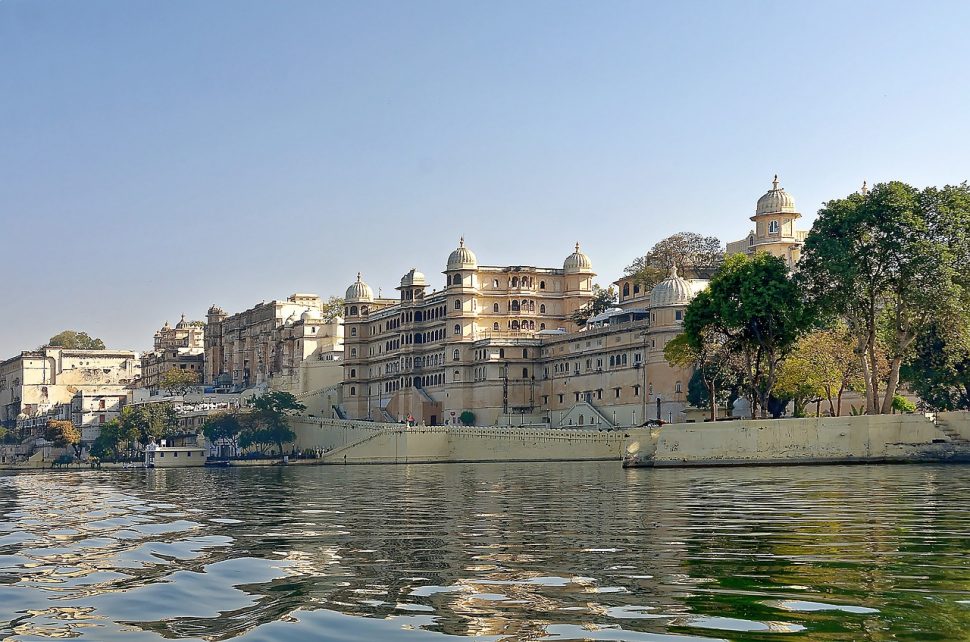
SAHELION KI BARI: On the banks of Fateh Sagar Lake, a beautiful garden was built for 48 maidens – meant to be a part of the dowry of the princess! Widespread lawns, gushing fountains and dappled walking lanes characterize the garden. The garden has four pools with graceful kiosks and fountains that sport elephant trunks for spouts. These gardens appear distinct and immaculate in taste. In the evening, enjoy Boat Ride on Lake Pichola in the backdrop of the setting sun.
LAKE PICHOLA: Maharana Udai Singh II significantly distended the gorgeous Pichola as a defense measure, when he founded Udaipur. Cradled amongst hills, gardens, havelis, temples and ghats, Lake Pichola is the picturesque spotlight of Udaipur. The lake sports two islands palaces – Jagniwas (popularly known as Lake Palace) and Jagmandir.
JAG MANDIR: Another island palace in Lake Pichola was built by Maharaja Karan Singh in 1615. It derives its name from Jagat Singh who started the initial structure. It was never used for the purpose for it was built. This palace was used to provide shelter to the Mughal Prince Khurram (later Emperor Shah Jahan) who rebelled against his Emperor-father, Jahangir in the 1620s. During the 1857 Mutiny this island palace once again served as a safe haven for European women and children.
Overnight in the hotel.
Day 12 – Udaipur – Delhi – Varanasi
After an early breakfast, transfer to airport for your flight to Delhi before connecting flight to the Holy City – Varanasi. On arrival, you will be received and transferred to Hotel Nadesar Palace.
VARANASI: Picturesquely situated on the crescent shaped left bank of the holy Ganga, Varanasi, one of the ancient seats of learning in India, is said to be a compound of the names of two streams, the Varuna and the Assi, which still flow in the north and south of the city respectively. Varanasi is probably one of the most ancient living cities in India. From time immemorial it has been a great religious center for Hindus and one of their most sacred places of pilgrimage, being visited by millions of people every year. The Ganga Ghats are full of pilgrims who flock to the place to take a dip in the holy Ganges, which is believed to absolve one from all sins.
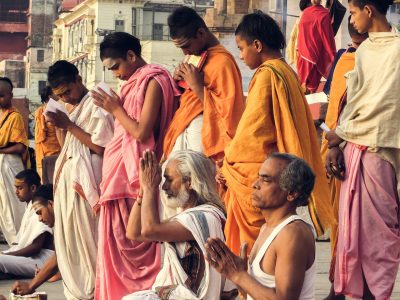
In the evening, witness the “Ganga Aarti Ceremony” with Boat Ride on the banks of the holy river:
GANGA AARTI CEREMONY: Every evening, a magical “Aarti” is performed at Dasashwamedh Ghat. The presiding priests stand on a wooden chauki (Stool). To the chant of Sanskrit mantras, and the clash of cymbals and drums, the holy river is worshipped with flowers, incense, sandalwood, milk and vermilion. First the blazing camphor lamp and then the many- flamed Aarti lamps are raised high and then arched back to the water, the dark river reflecting the golden flames as Ganga accepts the worship.
Overnight in the hotel.
Day 13 – Varanasi
Early in the morning, enjoy boat ride on River Ganges and participate in ‘’floating of the lamps” – quite an ethereal experience! Later proceed for local sightseeing through the narrow streets of the city with guide.
VISHWANATH TEMPLE: The most sacred temple in Varanasi is the Vishwanath Temple, located at Vishwanath Gali and dedicated to Lord Shiva. The Shivalinga at the Vishwanath Temple is among one of the 12 Jyotirlingas. The current temple was built in 1776 by Ahalya Bai of Indore with about 800 kg of gold plating on the towers, which gives the temple its colloquial name – Golden Temple.
DURGA TEMPLE: It was built in the 18th century by a Bengali Maharani and is stained red with ochre. The Durga Temple is commonly known as the Monkey Temple due to the many frisky monkeys that have made in their home. Non-Hindus can enter the courtyard but not the inner sanctum.
BANARAS HINDU UNIVERSITY: Banaras Hindu University, an internationally reputed and innovative university was founded by the great nationalist leader, Pandit Madan Mohan Malviya, in 1916. It has produced many great freedom fighters and builders of modern India, as well as a large number of renowned scholars, artists, scientists and technologists. The area of the main campus of this premier University is 1300 acres with well-manicured lawns.
Return to the hotel and relax. In the afternoon, depart for an excursion to Sarnath by a private vehicle & guide:
SARNATH: Sarnath, located 10 Kms from Varanasi, is where Lord Buddha delivered his first sermon to the five holy men – preaching the middle path to final ‘NIRVANA’. Shakyamuni also walked from Bodhgaya to Sarnath to meet the five ascetics who had left him earlier. It is said that coming to the Ganges, he crossed it in one step, and it is where King Ashoka later made Pataliputra his capital city. Also visit the local Museum maintained by the Archeological Survey of India housing important excavations from the area including the famous “Ashoka Emblem.”
Overnight in the hotel.
Day 14 – Varanasi – Delhi
Today visit the Silk Weaving Centre on your way to the airport.
Packed lunch will be provided from the hotel. Board the flight to Delhi. On arrival, you will be received and transferred to Hotel Trident Gurgaon.
Late in the evening after dinner, transfer to the international airport for your flight to Montreal.
This tour is a private package with French speaking guides on site. It is a tailor-made itinerary that can be offered on the dates of your choice. Rates vary according to the number of people as well as departure dates.
Please contact Marcelle Jarry at 514-342-4462 or fill out our online form.
Take the peace of mind by subscribing to the travel insurance that suits you.

